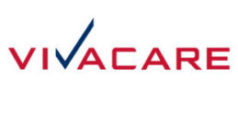Believed to be caused by inflammation of the facial nerve (7th cranial nerve), the paralysis results in distortion of the face and interferes with normal functions such as eating, smiling and closing the eyes. The progress from onset of symptoms to maximal weakness usually occurs within three days and almost always within one week.
- Disappearance of facial creases and nasolabial fold
- Drooping of saliva from the corner of the mouth
- Sagging of the lower eyelids and inability to close the eyelids; when patient tries to close the eye, there’s upward rolling movement of the eye (Bell’s phenomenon)
- Impaired speech
- Pain around the jaw or behind the ear on the affected side
Acupuncture as a Treatment
In conventional Chinese medicine, Bell’s palsy is known as Zhong Feng which translates as “Wind Attack”. This condition was thought to be associated with an invasion of “wind” that causes an imbalance in the “Qi”, which is the essential substance of the body, and stagnation of blood. The principle of acupuncture treatment is to expel this wind and enhance the movement of Qi and blood circulation. A number of Chinese studies had supported the therapeutic effect of acupuncture which was found to be beneficial in the management of Bell’s palsy. Reports had shown a minimum cure rate of 37 percent and a highest cure rate of 100 percent, with an average of 81 percent.
Acupuncture is often very successful in relieving the facial paralysis especially when treatment is begun within the first two weeks of diagnosis. This form of treatment uses natural pressure points on the body and is believed to relieve pain by limiting swelling and inflammation. The acupuncturist inserts small, thin needles into the skin in a number of main pulse points throughout the face and body. Some of the key point insertions will be in the stomach, liver, gall bladder, spleen, large intestine, forehead and hands. The side of the face that is used varies from patient to patient. There is no harmful side effect to this treatment.
